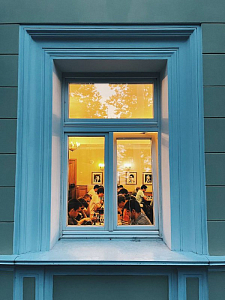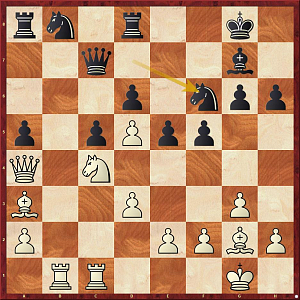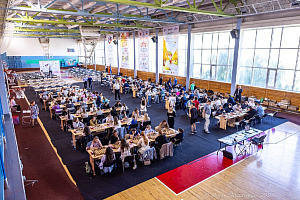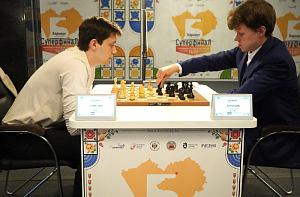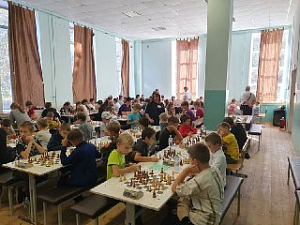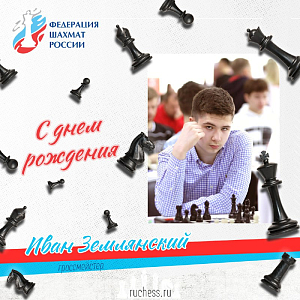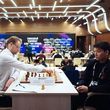The More Masks the Better
Dmitry Kryakvin reviews the start of the Russian Championships Higher League
A real symbol of the present-day chess that has survived from the old age and still remembers the presence of many world champions beginning from Mikhail Tal and up to Vladimir Kramnik, the hotel Zhemchuzhina of Sochi has witnessed yet another start of the qualification tournament in a season that has barely seen any events. These are sad times and who knows if we are not in for yet another half a year of quarantine, but one cannot but say kind words about the organizing committee. Be as it may, the Higher League with its hefty prize fund and tickets into the Super Final has started. Skeptics may claim what they want, but lack of money and feeling of hopelessness will give a hard time to chess players if you go on doing nothing.
Preparation for the competition involved large-scale measures. Almost every day the participants got emails from Vladimir Makhnev with admission instructions. Eteri Kublashvili's beautiful pictures show safety screens so beloved by many from our Chelyabinsk competition reports, as well as masks to all tastes and colors, wearing of which is checked by Artem Akhmetov and his team. Everything is under control.
Playing chess while wearing a mask is unusual and is quite a challenge.
Although the men's section misses several strong players, the competition still features a very tough lineup. On the other hand, having qualified into the Superfinal by rating, two beautiful ladies – Aleksandra Goryachkina and Polina Shuvalova – have chosen to compete in the men's section. The women's section has gathered almost all strongest players except for last year's winner Elena Tomilova, who comments on the tournament games together with GM Roman Ovechkin.
Going into the Sochi event there happened a change of the country's youngest grandmaster. A holder of an impressive rating approaching 2700, Andrey Esipenko of Novocherkassk used to be our younger generation's leader over several years.
However, in times of quarantine Arseny Nesterov of Novgorod has finally received the GM title! I want to thank the head coach of the national teams Sergey Janovsky, whose efforts allowed us to resume collaboration with the young athlete last year, which was so quiet a period. Meanwhile, Arseny developed a hurricane pace and made all of the three required norms in just 9 months.
By the way, Esipenko and Nesterov have recently shined in a strong online European championship by taking first and third places, respectively. If anything, there is no shortage of talents whose time to shine is near, and in the Higher League there play Volodar Murzin (a holder of two GM norms), Stefan Pogosyan, Rudik Makarian, Martin Stukan, and other promising figures. That said, the women's section is just a battle of generations.
Round one is known to be a time of upsets. Thus, its number in the beautiful half's section turned out to be just mind-boggling. There have stumbled as many as five (!) rating favorites. Anastasia Bodnaruk lost to Margarita Potapova, Mariya Yakimova outperformed Alina Bivol, Ekaterina Kovalevskaya lost to Margarita Schepetkova, Evgenija Ovod to Yulia Grigorieva, and Ekaterina Nasyrova defeated Daria Charochkina. Needless to say, Rita Potapova's excellent result in the 2019 Superfinal does little to qualify her as an underdog. It's just that Margarita's rating has sagged slightly after last year's rendezvous with the Indian juniors. However, this is clearly a temporary phenomenon.
Ovod – Grigorieva
Nimzowitsch Defense
1.e4 Nc6!
How about that! What a pleasure to make such a knight move in the first round of the Russian Higher League. Up to a certain moment, a seasoned Evgenija Ovod treated the position in a proper way by keeping her opponent's aggressive plans in check.
2.d4 d5 3.e5 Bf5 4.Ne2 e6 5.Ng3 Bg6 6.h4 h5 7.Be2 Be7 8.N:h5 B:h5 9.B:h5 g6 10.Be2 R:h4 11.R:h4 B:h4 12.g3 Bg5 13.f4 Bh6
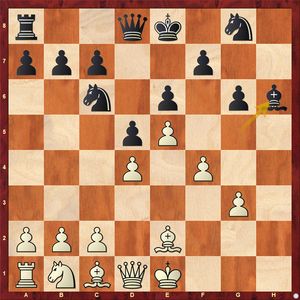
White has a bishop pair, but she still needs to develop her pieces and evacuate the king. It gave enough reasons to be on the alert. Training the guns against the g6-square with 14.Qd3! would have served the purpose.
14.Be3
Now 14...g5!? deserved attention, but the athlete from Bashkiria undermined the white chain in a different way.
14...f6 15.Bd3
It was again worth deploying the queen into the shooting position via 15.Qd3! The g6-pawn capture with the bishop is by far less unpleasant for the black king.
15...fe 16.B:g6+ Kd7! 17.de N:e5
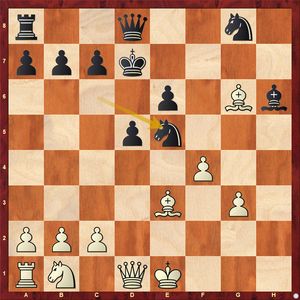
The black king is in safety, and White still needs to sort out the discoordination issue of her pieces. White should have probably aimed at safety first with 8.Bd3=, but Ovod clearly underestimated her opponent's attacking potential.
18.Bh5?! Nc4 19.Bd4?
19.Bf2 Bg7 looks great no longer, but the text is a complete failure.
19...B:f4! 20.Qg4
The white king is doomed after 20.gf Qh4+ 21.Kf1 (21.Bf2 Qh1+) 21...Rf8 22.Bf3 Q:f4 23.Kf2 (23.Kg2 Nh6) 23...Nh6, but refusing to accept the sacrifice did not allow Ovod to drag resistance any longer.
20...Bg5 21.Nc3 Nh6 22.Qh3 Nf5 23.Bf2 Bd2+ 24.Kf1 Qg5 25.Ne2 Rh8
The black pieces arrive at the shooting positions like clockwork.
26.g4 Nfe3+ 27.Kg1 Ne5 28.Qg3 R:h5! 29.Nf4
Or 29.gh Nf3+ 30.Kh1 Q:h5+, winning.
29...Rh4 30.Nd3 R:g4 31.N:e5+ Q:e5 White resigned.
However, it was not entirely without bright moments for the favorite players. The Moscow champion Anastasia Paramzina and Oksana Gritsaeva produced fireworks. Paramzina's error proved fatal.
Paramzina – Gritsaeva
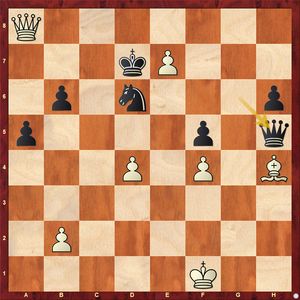
55.d5
Can the black queen be a lone warrior? No seems the logical answer, but for Oksana Igorevna, who has left behind her students for the tournament, nothing has ever been impossible.
55...Qd1+ 56.Kg2 Qe2+ 57.Kg1?!
This is a significant inaccuracy instead of the precise 57.Kh1 that results in the white pawns dropping one after another and with checks at that.
57...Qg4+! 58.Kf1 Q:f4+ (here goes pawn No.1) 59.Kg2 Qe4+ 60.Kf1 Qb1+ 61.Kg2 Q:b2+ (pawn No.2) 62.Kf1?
62.Bf2! K:e7 63.Qc6 would have kept the intrigue in the game, and now Gritsaeva seals the deal by trading the queens.
62...Qc1+ 63.Kg2 Qc8! 64.Qa7+ Qb7 65.Q:b7+ N:b7 0-1 White is down a lot of material, and her proud e7-pawn drops as well.
It is a good idea to turn to endings after such queen adventures. Ekaterina Goltseva is a very tough warrior in the final stage of the game, which I have first-hand knowledge of from the Igor Kurnosov Memorial.
Goltseva – Salakhova
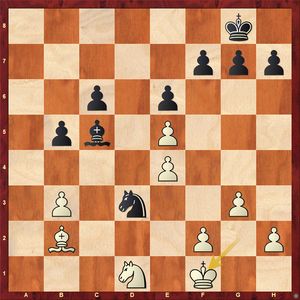
However, no sooner than Salakhova committed an inaccuracy with 25...N:b2? 26.N:b2 g5 27.Nd3 Bd4, than Goltseva immediately engineered a fortress: 28.b4 g4 29.Kg2 Kg7 30.h3 h5 31.h4!? Kf8 32.f3 with a draw soon after.
In the men's tournament, the fight's intensity was much higher, as is often the case. Artemiev – Sviridov, Iljiushenok – Esipenko, Predke – Lobanov, Fedoseev – Zabotin, Murzin – Sarana, Shuvalova – Alekseev finished in a draw. In all games, the lower-rated players did not back down and performed in a commendable manner. In a situation like this, it is much more safe to start the competition on a lower board.
Bimiev – Rozum
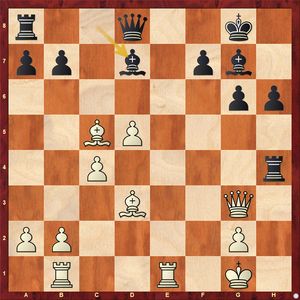
The warrior of the chess city of Grozny was once again fearlessly leading the battle and 24.Qf2! would have been the way to challenge the grandmaster. 24...Rh5 25.Re7 Bf5 26.Rd1 does not look great, when 24...Qg5 is met by 25.Be7.
However, Bimiev lashed out with 24.Be7??, and after 24...Bd4+ he had to resign in view of 25.Kf1 Rh1+ 26.Ke2 Q:e7+, dropping a piece.
The junior world champion Rudik Makaryan has so far failed to find a way to cope with Pavel Ponkratov.
Ponkratov – Makarian
Caro-Kann Defence
1.e4 c6 2.d4 d5 3.e5 Bf5 4.g4
They now tend to call this ferocious advance in Western chess literature as The Attack of the filibuster. Ponkratov has championed and scored many nice wins in this complicated line in tournament games.
5…Be4
4...Bd7 is a more conservative approach, which Ponkratov usually meets with 5.c4. In this line Black allows the dangerous blockading sacrifice e5-e6. Computers used to underestimate poisonous consequences of the resulting setup. The Vachier-Lagrave – Ding Liren game of the Alekhine memorial is well remembered in which the Chinese GM produced all the 2013 first line moves only to give up with his f8-bishop and h8-rook stalemated.
5.f3 Bg6
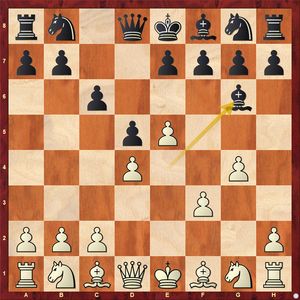
It was Evgeniy Najer who introduced this move instead of the then mainline 6.h4 h5 7.e6 Qd6 8.ef+ B:f7.
6...fe
As far as I see, White's idea comes down to a cute tactical nuance 6...Qd6 7.ef+ B:f7 8.Nh3! Nd7 9.Qe2 e5 (9...0–0–0 10.Bf4) 10.Bf4!, when the bishop's getting to f4 makes a big splash.
7.h4 c5
Rudik is known for his encyclopedic knowledge and thirst for opening excellence: Makarian was said to first prepare the entire Moscow delegation at the tournament in Chelyabinsk before looking up his own opponent's games in the database. Online databases show that 7...c5 has never met in the "live" games (perhaps they have employed this move in the correspondence games). Still, the position has collected as many as about 450 views anyway. Not so long ago, the leader of the Russian national team defeated the former US champion here after 7...Nd7 8.h5 Bf7 9.f4, as in Nepomniachtchi – Shankland, 2017 – if Black fails to untangle himself before white's pieces step into the shooting positions, the result is obvious.
8.h5 Bf7 9.f4 Nc6 10.Nf3 cd 11.N:d4 Qb6
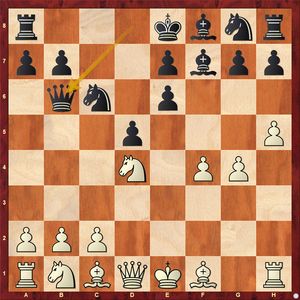
This is a critical moment of the game. Having burned much clock by that time, the opponents were clearly out of their books. Black tries to displace white's pieces out of the center, and Ponkratov needs to develop more than anything else. 12.Bb5 Nf6 13.Nc3 a6 or even 12.Be3!? Q:b2 13.N:c6 bc 14.Bd4 was an option, but the native of Chelyabinsk rather preferred development.
12.N:c6 bc 13.Qe2 e5!?
Maybe he should have opted for 13...Kf6 or 13...g6 instead because the game ended in Black's disaster, and the advice not to employ the filibuster attack against Pavel Ponkratov sounds way too shallow. Rudik gave the material back for the sake of development, but his king's position remains unreliable.
14.fe e6 15.Nd2 Bc5
Although the engine highlights 15...Nh6 16.Bh3 Be7 17.Nf3 0–0 18.g5 Nf5, it is too scary to be Black after 19.B:f5 ef 20.g6. The white pawns hover over the black king's shelter while there is no real counterplay on the queenside.
16.Nb3 Ne7 17.Bd2 a5 18.0–0–0 a4
After 18...Bf2 White may simply grab the pawn with 19.B:a5.
19.N:c5 Q:c5 20.Be3 Qa5 21.Qf2 a3 22.b3 Qc7
The 22...Qc3 23.Bd4 cartridge is blank, and White's bishop pair advantage gives him a crushing attack.
23.Qg3 Qa5 24.Bd2 Qb6 25.Qf4 0–0
25...c5 26.Qg5 Rg8 27.Bd3 h6 28.Qe3 does little to influence the flow of the game.
26.Bd3 c5
The immediate disaster could have been stopped with 26...Bg6 27.Qb4 Q:b4 28.B:b4 B:d3 29.R:d3 Rf7 30.Bc5, but the endgame is difficult for Black as the c5-bishop dominates the position and the a3-pawn will drop sooner or later. The c-pawn advance was an invitation for a direct assault.
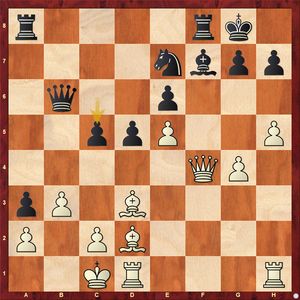
27.B:h7+! K:h7 28.h6 Ng8
There is no saving the game: 28...Bg6 29.hg+ K:g7 30.Qh6+ Kg8 31.Qh8+ Kf7 32.Rdf1+ Bf5 33.Qh5+ or 28...g6 29.Qf6.
29.h:g7+ K:g7 30.Qh2 Rfb8
30...Bg6 31.Qh8+ Kf7 32.Rdf1+ Ke8 33.R:f8+ K:f8 34.Rf1+ Bf7 35.g5 is slightly more tenacious, but White gets to the black king anyway.
31.Bh6+ Black resigned. A beautiful victory!
It did not go without upsets for the favorites – David Paravyan went down to Maxim Samusenko and Vadim Zvjaginsev to Artur Gaifullin.
Zvjaginsev – Gaifullin
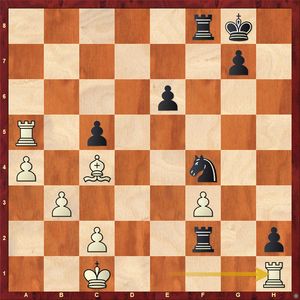
This is an interesting position! Black promotes the h-pawn, but White is likely to start advancing his passers' chain on the queenside. 29...Rf5 deserved attention to keep the с5-pawn alive, but Gaifullin's actions followed the principle "I see the goal and no obstacles in the way of attaining it."
29…Nh5!? 30.R:c5 Ng3
White should have opted for 31.B:e6+! Kh7 32.R:h2+ R:h2 33.a5, when his pawns can be a real match to Black's extra rook. Zvjaginsev likely hoped to stop the h2-pawn with some cosmetic measures without seeing the actual refutation.
31.Rd1? Rg2 32.B:e6+ Kh7 33.Rc4 g5! 34.Rc7+ Kh8 and White resigned because 35.Bd5 Rg1 36.f4 does not help because of 36...Rd8 and Black promotes without White sacrificing his rook for the pawn!
Paravyan – Samusenko
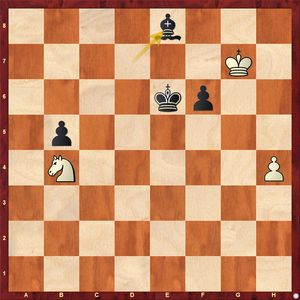
57.Nd3?
This is a cute study in which White is supposed to find a draw: 57.Na6!! Ke5 (57...Kf5 58.Nc7 b4 59.N:e8 b3 60.Nd6+ Kg4 61.Nc4 f5 62.Kg6 f4 63.h5 f3 64.h6 f2 65.h7 b2 66.N:b2 f1Q 67.h8Q=) 58.Nc7 b4, and now sounding the retreat with 59.Na6! (59.N:e8? b3 60.h5 b2 61.h6 b1Q – and the queen is superior to the knight and pawn after 62.h7 Qb7+ 63.Kh6 Qh1+ 64.Kg7 Qg2+ 65.Kf8 Qh3 66.Kg8 Qg4+ 67.Kf8 (67.Ng7 Qc8+ 68.Kf7 Qh8-+) 67...Qh5-+) 59...b3 60.Nc5 b2 61.Nd3+, doing away with the passed pawn.
57...Kf5! 58.Kf8 Bh5 59.Ke7 Be2 60.Nc1
60.Nb4 Ke5 fails to help either. Although the bishop is powerful on both flanks, David has worked wonders with his knight so far.
60...Bg4 61.Nd3 Be2 62.Nc1 Bd1 63.Nd3 Bh5 64.Nb4 (64.Kd6 Kg4) 64...Bf3
A subtle 64...Ke5! was winning because after 65.Nd3+ (65.Nc6+ Kd5) 65...Kd4 66.Nf4 Bg4 67.K:f6 b4 the knight cannot stop the passed pawn.
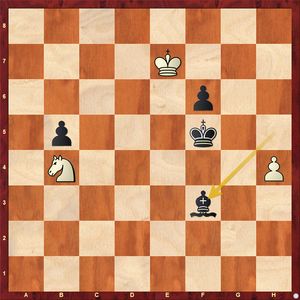
65.Nd3
It seems that Black has no calculable way of winning after 65.Kd6!, aiming at 65…Kg4 66.Kс5 Be2 67.Nd5 f5 68.Ne3+ Kf4 69.h5! However, nothing is to be ruled out when players are pressed for time and have to rattle out their moves on incremented time. Now Maxim Samusenko manages to promote his passed pawns.
65...Be4 66.Nc5 Bf3 67.Nd3 Ke4 68.Nc5+ Kd4 69.Nb3+ Ke5 70.Nc5 f5, and the rest was plain sailing.
71.Nd7+ Kd4 72.Kd6 f4 73.Nc5 b4 74.Ne6+ Ke3 75.Ke5 Be4 76.Nc5 Bc2 77.Na6 b3 78.Nc7 b2, 0-1
A game of one of the national team's coaches was full of action.
Riazantsev – Kardashevskiy
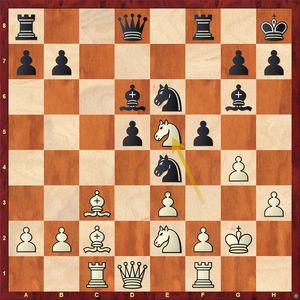
Black's assault could have been very potent after 18...fg 19.hg B:e5 20.B:e5 Qh4. However, the queen's sortie spoils nothing yet.
18…Qh4 19.B:e4! fe 20.Q:d5 Ng5 21.Q:d6 Q:h3+ 22.Kg1 Rf6 23.Qc7!
Black went all out to deliver checkmate, but Riazantsev was up to the task by making all only moves and reducing his opponent's attacking potential.
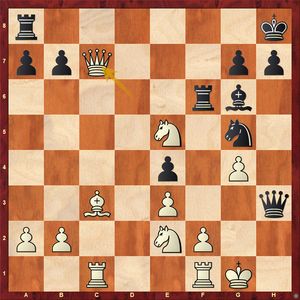
23…Re8?
23...Rg8!! 24.Nf4 R:f4 25.e:f4 Nf3+ 26.N:f3 Q:g4+ was a draw as the g8-rook kept the king safe.
24.Кf4! Фh4
Alas, 24...R:f4? is no longer available in view of 25.N:g6+ h:g6 26.Q:g7#. Now the white king is safe, and the army in the offensive perishes.
25.Kg2 R:e5 26.Qc8+ Be8 27.B:e5 Re6 28.Kg6+ hg 29.Rh1 1–0
I wish good health even more than luck to all participants! Looking forward to seeing you in two days!











